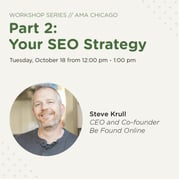Schema 101: A Beginner-Friendly Guide to Boosting Search Visibility
June 04, 2025
9 Minute Read

Ever wonder how some websites manage to snag those extras in Google search results? We’re talking star ratings, event dates, product details, or even those neat little dropdown FAQs.
Spoiler alert: It’s not magic. It’s schema.
Schema markup (aka structured data) might sound like something only a developer could love, but hear us out: it’s actually one of the most approachable tools you can use to boost your visibility in search. And you don’t need to be fluent in code to make it work for your website (hallelujah).
(hallelujah).
At BFO, we’ve helped scrappy startups and national brands use schema to stand out in search results. And while we do have a few devs on the team who get way too excited about JSON-LD, we also know how to explain it without making your eyes glaze over.
In this guide, we’ll walk you through the basics of schema, including what it is, why it matters, and how you can start using it (yes, even if you’re totally new to this). Think of it as SEO’s secret sauce…and we’re giving you the recipe.
Schema in Plain English: What It Does & Why It Matters
Let’s say you just published a blog about your new product or created a new FAQ page. You’ve got great content, but how do you help Google understand what it’s about?
Enter: schema markup. Your content’s backstage pass to the search engine spotlight.
Now, we know “schema” sounds a little...techy. But it’s really just a way of adding extra details behind the scenes so search engines like Google can better understand what’s on your site. Think of it like a cheat sheet for your content.
your content.
Without schema, Google has to guess. With schema, you’re handing it a helpful note that says, “Hey, this isn’t just a block of text. This is a product page with a price, availability, and a five-star rating.” Or, “This is an event happening on Thursday at 6 p.m. at this exact location.” That extra context can make all the difference.
When you add schema, your content becomes eligible for rich results (aka, the fancy stuff in search). Those are the stars, images, FAQs, and other eye-catching enhancements that make your listing stand out from the plain-text crowd.
Why does that matter? Because more visibility = more clicks. And more clicks = more chances to connect with your audience (and yes, more conversions too).
So no, schema might not directly boost your rankings, but it definitely boosts your chances of being noticed and clicked. And in the world of SEO, that’s a win worth chasing.
What Kinds of Schema Are Out There?
Great question, and the short answer is: a lot.
The long answer? There’s a whole menu of schema types, each designed to help search engines understand specific kinds of content. Whether you’re a local business, an online store, or a restaurant with the best tacos in town (Chicago, we’re looking at you), there’s schema that fits your site.
Let’s go over some of the most popular (and beginner-friendly) options you can start using today.
Article Schema
If you publish blog posts or news content, this one’s for you. Article schema helps Google recognize that your page is editorial content, making it eligible for things like Top Stories carousels or enhanced appearance in search results. Bonus points if you include things like author, publish date, and headline markup.
FAQ Schema
You know those accordion-style dropdowns that show up right in search results with answers to common questions? That’s FAQ schema at work. It’s one of the easiest types to implement and is great for boosting your visibility while making your content more helpful.
Product Schema
If you sell anything online, from candles to camera gear, product schema is a must. It lets you mark up details like price, availability, and reviews so shoppers can see that info right on the search page. More info upfront leads to more qualified clicks.
Review & Aggregate Rating Schema
This one adds those gold stars to your listings. You can mark up customer reviews or average ratings to make your business or product stand out in a crowd. Just make sure your reviews are legit—Google’s not a fan of fake fluff.
Event Schema
Hosting a webinar, class, or local event? Event schema tells search engines the what, when, and where, so your event shows up with dates, locations, and times in search results.
Local Business Schema
This one’s especially important for brick-and-mortar businesses. Local Business schema highlights key info like your name, address, phone number, business hours, and even customer reviews. All of these things help you show up better in local search and Google Maps.
Recipe Schema
Got recipes? Recipe schema helps food content stand out with rich results showing cooking time, ingredients, star ratings, and pictures, perfect for attracting foodies and kitchen pros alike.
Of course, this isn’t the full list. There are dozens of schema types for everything from books to job postings to how-to guides. But you don’t need to use them all to get started. Even just adding one or two can make a noticeable difference in how your content appears in search.
Why Schema Is a Game-Changer for SEO
SEO is already a competitive game, and schema is one of the few tools that can give you an edge without requiring a full-on site overhaul.
Think about it. If your search listing includes extra details like star ratings, product prices, or clickable FAQs, and your competitor’s listing is just…text? Which one are you more likely to click?
Schema helps your content stand out visually in search results. That kind of visibility leads to more clicks, traffic, and better engagement, all signals Google pays attention to. So while schema may not move you up the rankings directly, it can improve your click-through rate (CTR), influencing rankings over time.
kind of visibility leads to more clicks, traffic, and better engagement, all signals Google pays attention to. So while schema may not move you up the rankings directly, it can improve your click-through rate (CTR), influencing rankings over time.
Plus, in an age of AI-driven search and Google’s Search Generative Experience (SGE), providing clear, structured data makes it easier for machines to understand what your content is about (and that matters more now than ever).
Bottom line: Schema doesn’t replace your SEO strategy, it enhances it. So if you’re looking for a quick(ish) win with long-term payoff, schema might just be your new favorite SEO sidekick.
Best Practices to Keep in Mind
Decided to give schema a go? *Virtual high five*
Before you dive all the way in, there are a few best practices worth considering. These tips will help ensure your structured data works how it’s supposed to, and, more importantly, doesn’t land you in any SEO hot water.
Keep It Honest And Accurate
First and foremost, don’t try to trick Google. The information in your schema markup should match the content on your page. For example, if you use Review schema, those reviews need to be visible to users, not just something hiding in the code. Schema isn’t a place to fudge the facts or sneak in content that doesn’t belong. (Google sees everything. Trust us.)
Choose the Right Type
There are a lot of schema types out there, and it can be tempting to throw all of them onto a page just to see what sticks. But more isn’t always better. Use the schema type that best matches the purpose of your page. If it’s an article, use Article schema. If it’s a product page, go with Product schema. Keep it relevant and focused.
Update It Regularly
Schema isn’t a “set it and forget it” kind of thing. If you change your content, say you updated a product price or changed your business hours, make sure the schema gets updated, too. Keeping things in sync helps avoid confusion (for both users and search engines).
Test Everything
Before and after you add schema to a page, run it through Google’s Rich Results Test or the Schema Markup Validator. These tools will flag any errors or warnings, kind of like a quick spellcheck for your structured data.
Adding schema is a smart move, but like all things SEO, doing it right matters just as much as doing it at all. Stick to these best practices and you’ll be well on your way to better search visibility without accidentally stepping on any digital landmines.
So...Is Schema Worth It?
Schema is one of those SEO tools that flies under the radar but quietly delivers big results. It helps your content stand out, gives
search engines a clearer picture of your pages, and makes you eligible for those coveted rich results. All of these things then lead to more clicks, visibility, and opportunities to connect with your audience.
And the best part? You don’t need to update your entire website or learn code overnight. Whether you’re adding a few FAQs or making your local business listing shine, schema is a low-effort, high-reward move.
If you’re not sure where to start or just want someone to double-check your markup without talking to you in code-only sentences, that’s where we come in.
The BFO team helps businesses like yours turn technical SEO into something that actually makes sense (and gets results). Reach out anytime—we’re always happy to help!
Need More Marketing Tips in Your Life? Subscribe to Our Monthly Newsletter!

Jon Pappas
Jonathon is the Director of Organic Search at BFO. He’s a reliable and consistent member of our team and is very detail-oriented and client-focused.
CATEGORIES
SUBSCRIBE TO OUR BLOG
Stay up to date with the latest industry best practices in digital marketing!























.png?width=339&height=179&name=Webinar%20Banner%20(1).png)



.png?width=339&height=179&name=July%20Webinar%20(Newsletter).png)

.png?width=339&height=179&name=Webinar%20Banner-April-02%20(1).png)
%20(4).png?width=339&height=179&name=Webinar%20Banner-May-02%20(1)%20(4).png)




.png?width=339&height=179&name=March%202023%20Webinar%20Ad%20(autoresponder).png)






























































